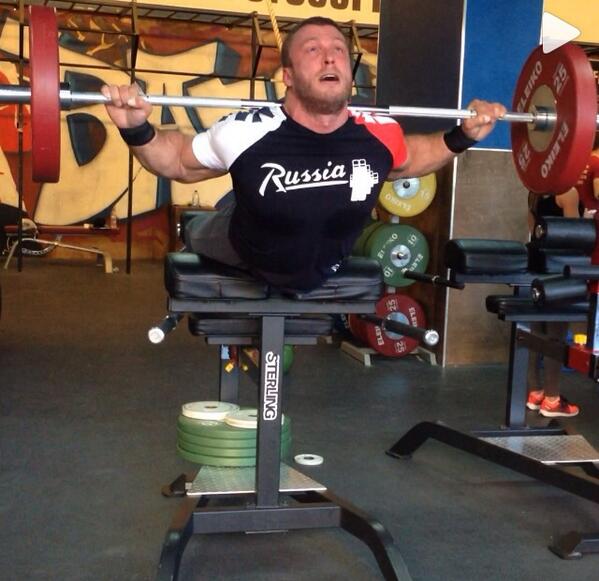As I browse social media I have a feeling paused variations of the basic powerlifts are somehow forgotten yet they are staples in those old and super effective Soviet strength routines. Popularized in the West by the great Coach Boris Sheiko, pause squats, pause deadlifts and paused bench presses are excellent big lifts variations for several reasons:
1/ paused lifts offer more volume in the basic powerlifts with less CNS fatigues. you can lift more tonnage without frying the CNS because you use less weight
2/ paused lifts (depending on where you pause) offer working exactly your sticking points like start of your deadlift, etc.
3/ paused lifts improve weak muscle groups in your powerlifts (e.g. pause deadlifts target mid back and core significantly during your deadlifts)
4/ paused lifts offer excellent strengthening method of the supporting stabilizing muscles
(Source: strengthlog.com)
Here are my 6 favourites:
BOTTOM POSITION PAUSE SQUAT
These are used very often in the Eastern Bloc routines. For many reasons. Typically as the second squat of the day where you would start with regular squats 5 sets of 3 with 75-80%, then bench press, then again pause squats for example 4 sets of 4 with 60%. The pause should be minimum 2 full seconds. These work the stabilizers very well and build confidence coming out of the whole.
PAUSE SQUATS ON THE WAY UP
You descend into a deep squat, then reverse and on the way up a tad above parallel you pause for 2 full seconds, then you finish the lift. These build core and quads very effectively.
PAUSED BENCH PRESS
You perform your regular bench press and pause the bar on your lower chest. Everything remains tight. The pause can be full 2 seconds, 3 seconds. I used to have my training partner perform a 5 sec pause as it built his starting strength a lot.
HANGING PAUSE BENCH PRESS
Take the weight out of the rack lower to about 1 inch above your chest, pause for 2 full seconds, then reverse and finish the lift. Excellent for pec and delt strength.
PAUSED DEADLIFT - MID RANGE
Perform your regular deadlift, conventional or sumo, and pause the bar exactly below you knee caps. The bar will try to bend your back but you must resist. 3 sec pause here. You mid back and core will get strong as hell.
PAUSED DEADLIFT - OFF THE FLOOR
Set-up into your deadlift position, start pulling and immediatly stop 1 inch off the floor. You have to remain tight and keep perfect position. The weight will try to reverse you and pull you down but you must resist. This variation teaches the body to remain tight and load the hips.
Good luck :)


















